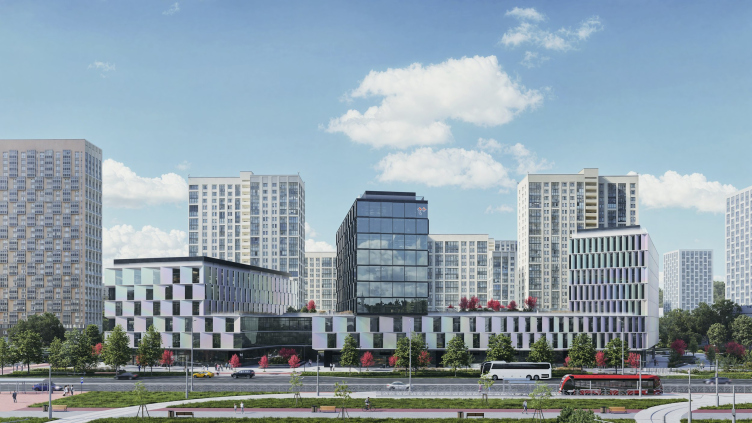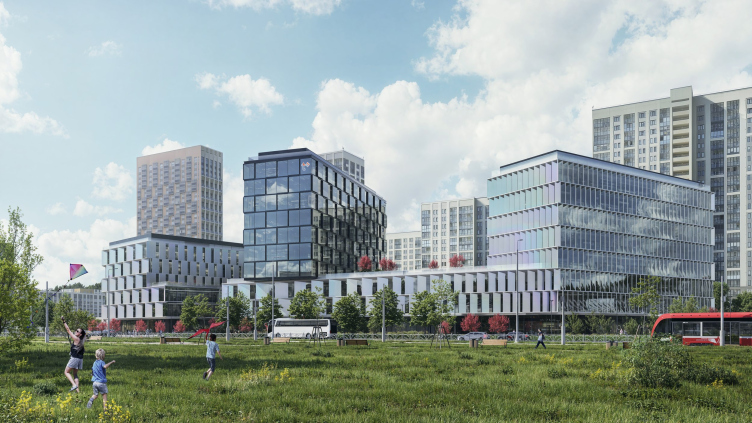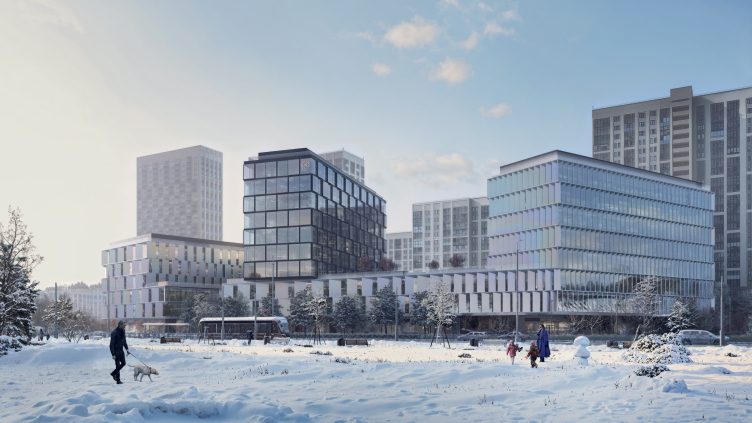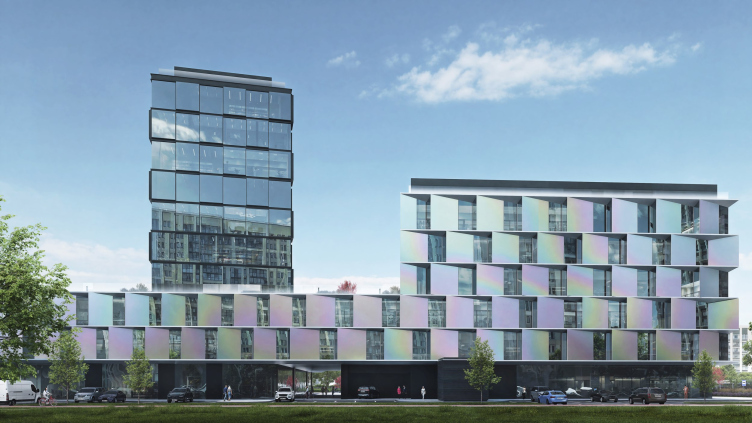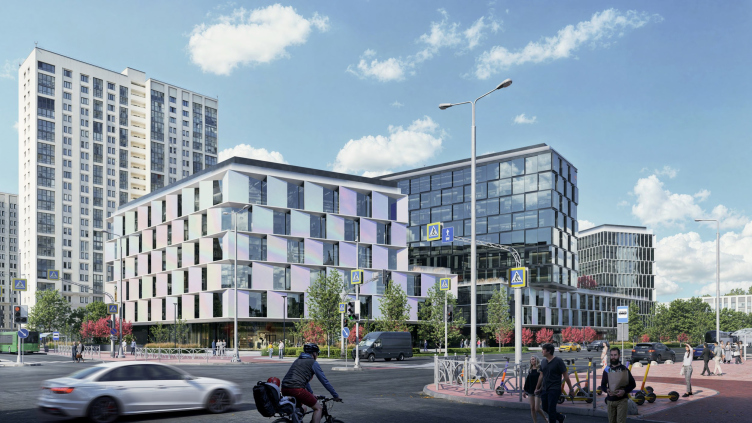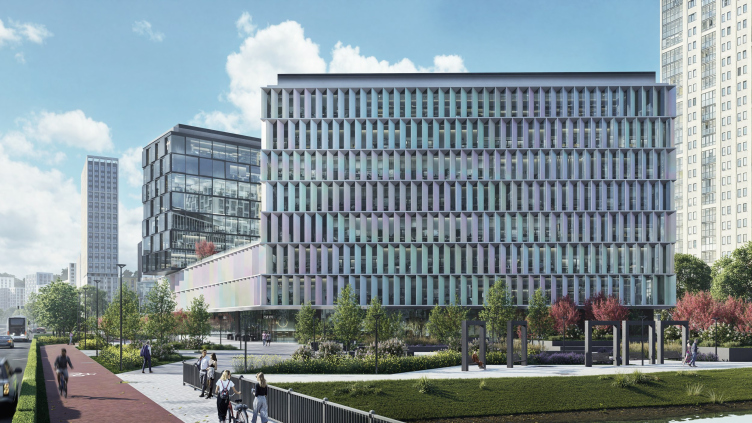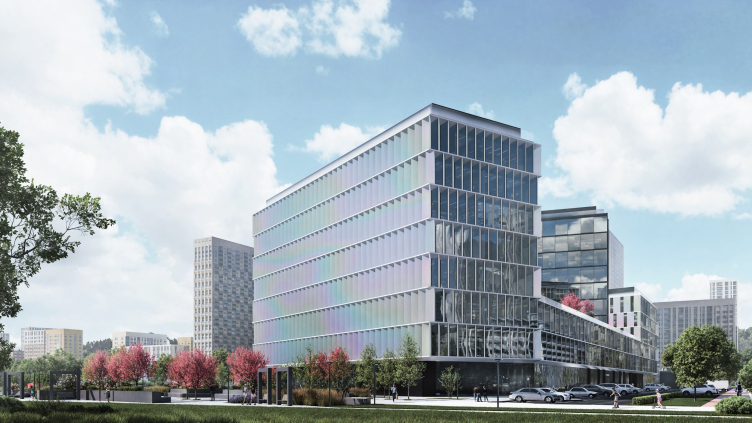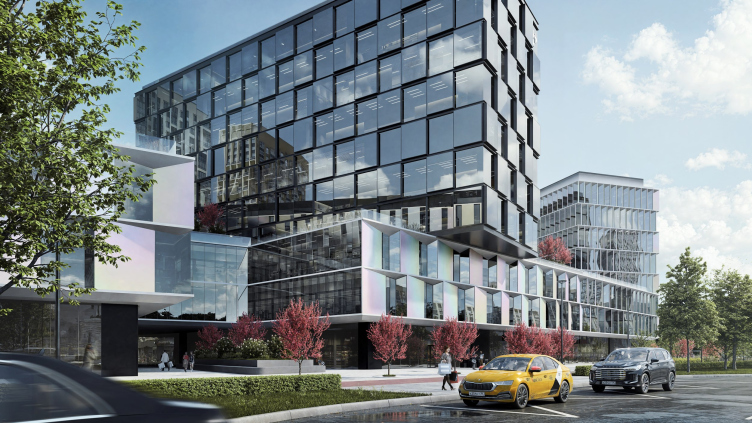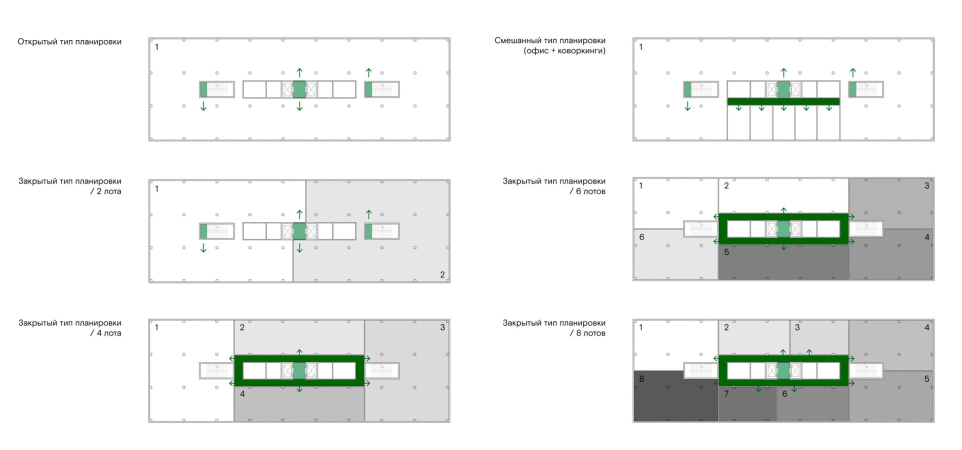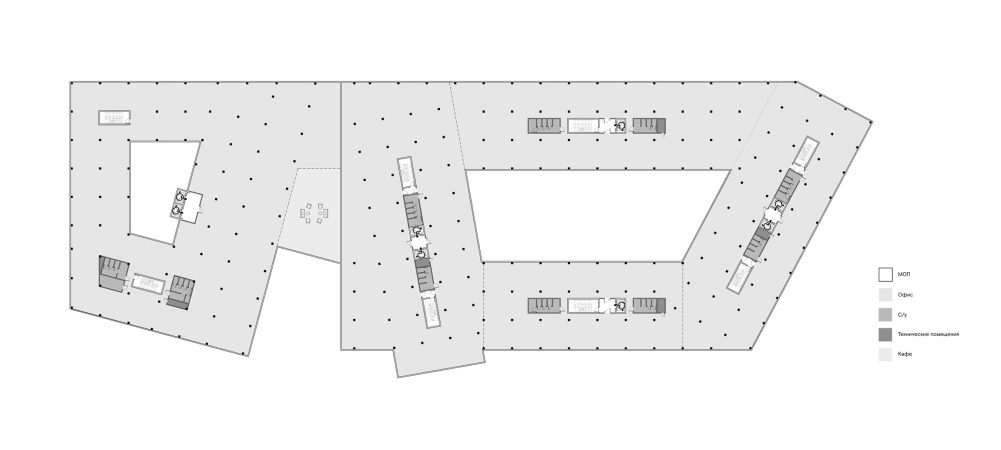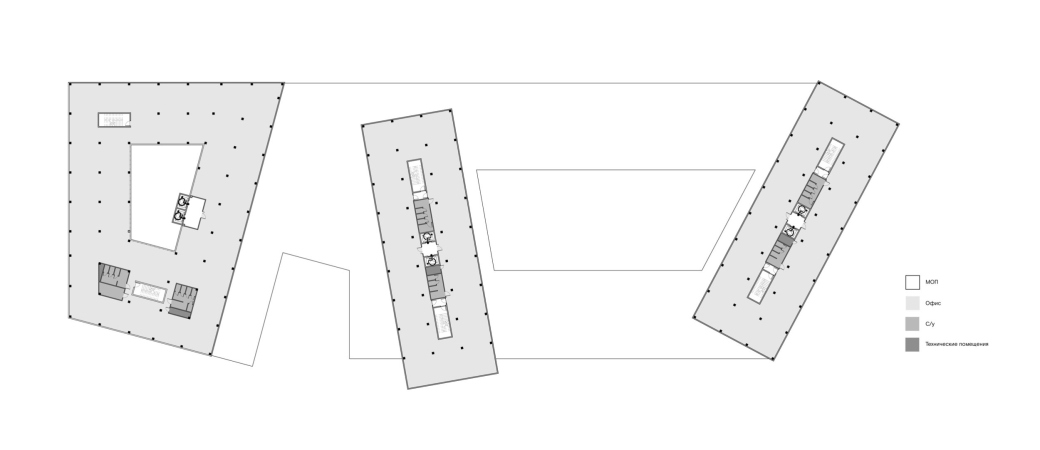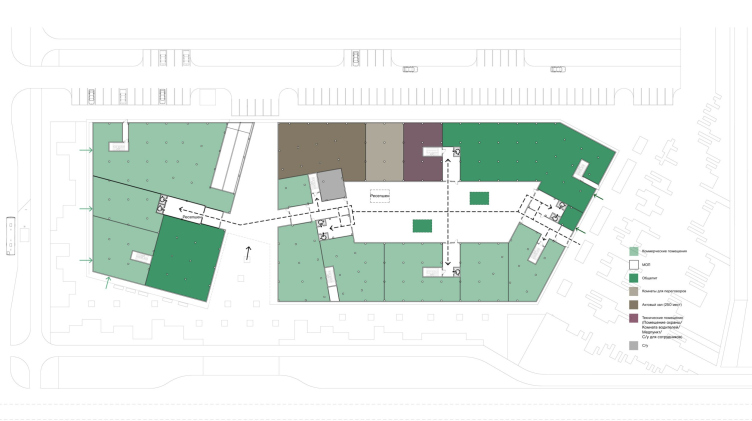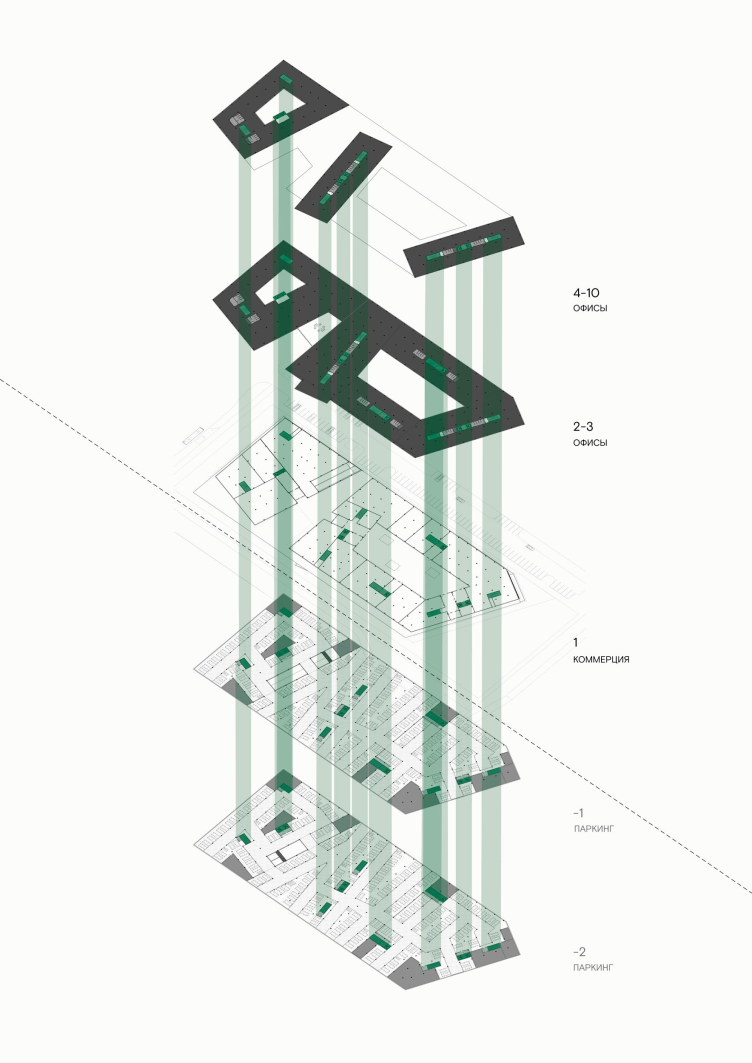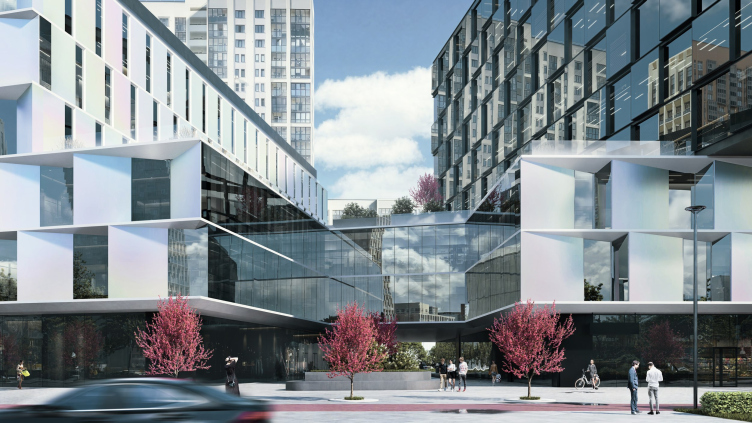Figures like these are on the scale of a full-fledged city, which means the necessary infrastructure must match. In addition to schools and medical institutions, the district already has several parks, two churches, a judo palace, and even a canal; much is still under construction. The public core gravitates toward the “Administrative” block, which lies along the main axis – Wilhelm de Gennin Street. Opposite it, opens the vista of Preobrazhensky Park: the concept for its landscaping was developed by the Archinform bureau, which sought to create a green, activity-rich oasis in the middle of residential quarters, by analogy with Central Park in New York. On the side of Wilhelm de Gennin Street, the park features the Church in the Name of the Holy Builders of God, which will apparently soon be complemented by a public and cultural center in the form of a kremlin and the Academy of Children’s Creativity.
Despite all the facilities listed above, Akademichesky still exhibits a characteristic imbalance found in most new districts: plenty of housing, few jobs. While working on the business center project, CNTR sought to help restore the balance. Initially, the building was conceived as the headquarters of the Sverdlovsk branch of PJSC T+ – Russia’s largest private company in the field of electric power and heat supply. The company also built a new CHP plant in the district. However, as the project developed, it acquired greater flexibility and versatility: the central part of the building will house the headquarters, while the remaining premises are planned to be leased to companies of various sizes, and the first level of the building will be turned into a space popular with city residents.
The office building in Yekaterinburg
Copyright: © CNTR Architects
Light and a View of the Park
The business center will occupy roughly half of the “Administrative” block, shaping the corner at the intersection of Wilhelm de Gennin Street and Academician Parin Street. On the adjacent lot, the district court has already been built, and in the future, other facilities will be added. The block itself is a relatively narrow “strip” between Preobrazhensky Park and the residential quarters.
The office building in Yekaterinburg
Copyright: © CNTR Architects
The business center consists of three buildings of different heights, united by a shared block comprising the first three floors. The offset and rotation of the buildings relative to Wilhelm de Gennin Street expand the views from the offices, opening sightlines to Preobrazhensky Park and providing them with natural light. Toward the residential buildings, the “towers” face with their end walls, reducing visual contact to a minimum. Making the most of the location’s advantages – the park and the open perspective – the architects approach the planning of workspaces as carefully as they would when designing apartments with scenic views or hotel rooms.
The office building in Yekaterinburg
Copyright: © CNTR Architects
The office building in Yekaterinburg
Copyright: © CNTR Architects
The same intent can be traced in the façade design. Sculpturally, all the three buildings are different, yet the chosen techniques address similar objectives: to “focus” on the best view, shield from direct sunlight, and protect from unwanted glances. The western and central buildings have a larger, “cubic” division of façade modules, while the eastern one features a finer, elongated, rhythmic pattern.
The office building in Yekaterinburg
Copyright: © CNTR Architects
The office building in Yekaterinburg
Copyright: © CNTR Architects
The two outer towers, as well as the connecting block of the first floors, alternate glazing with white panels coated in a “chameleon” finish. This technique allows the building to blend with the varied surrounding development and creates a play of light and color on the façades, helping to avoid monotony. The tilt angle of the panels corresponds to the sun’s movement and the visual perspectives. The more sunlight the façade receives, the greater the proportion of solid elements. The central tower stands out thanks to its height, color contrast, and continuous glazing: here the architects propose using body-tinted glass with an increased energy-saving coefficient.
The office building in Yekaterinburg
Copyright: © CNTR Architects
The office building in Yekaterinburg
Copyright: © CNTR Architects
The office building in Yekaterinburg
Copyright: © CNTR Architects
Additional natural light is provided by two atriums. There are also two open terraces for employees, with areas for working and relaxing in the fresh air.
Flexibility and comfort
In order to ensure the building’s functional flexibility, the architects placed its core elements – these being stair and elevator hubs, restrooms, and technical rooms – in the center of each volume. This leaves the perimeter free, allowing floors to be divided into various-sized lots and accommodating office, open-plan, or hybrid layouts. Spaces can easily be adapted for large corporations, small startups, or even coworking hubs.
The ground floor serves both foot traffic and office workers: the restaurants, cafés, and shops here will be open to everyone. Four access control systems and freely positioned reception desks allow visitor and tenant flows to be easily separated. The lobby area is reserved for tenants only, with access to both the left and right wings and the rest of the functional blocks. It also doubles as a year-round venue for meetings, coffee breaks, events, and conferences. Two underground levels are occupied by the parking garage.
The office building in Yekaterinburg. Plan of the 1st floor
Copyright: © CNTR Architects
The office building in Yekaterinburg. The form making
Copyright: © CNTR Architects
The main entrance stands out thanks to its recessed position and the cantilevered glazed volume above, ensuring visual transparency at street level. Active landscaping integrates the site into the everyday life of the district, making the building a truly multifunctional hub.
The office building in Yekaterinburg
Copyright: © CNTR Architects
Attractive through both architecture and planning, the business center has the potential to reduce commuting in the new district and improve the overall quality of its environment.


